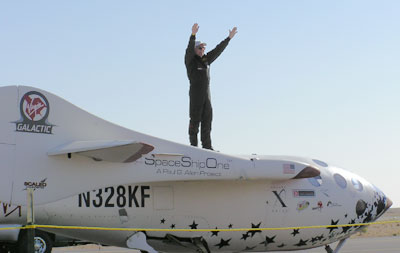Human factors in commercial suborbital flightAerospace medicine for alt.space enthusiastsby John Jurist
|
| Although waivers signed by people assuming risks of, for example, skydiving or scuba diving, are common, it is not clear how enforceable such waivers really are. |
The rub comes with definition of risk to crew members and passengers. This has resulted in heated discussions in recent months. Generally, it is agreed that crew members are professional individuals capable of assessing the risks and benefits of suborbital flight and intelligently choosing to assume those risks. Passengers, however, are another matter entirely. Although waivers signed by people assuming risks of, for example, skydiving or scuba diving, are common, it is not clear how enforceable such waivers really are.
Many space entrepreneurs assume that a person will be willing to pay up to several hundred thousand dollars in return for what essentially amounts to a joyride. People capable of paying such a price are frequently business owners whose insurance (not to mention boards of directors) place direct limitations on their non-business-related activities. More importantly, such people also have relatives and sizeable earning capacities. In the case of a suborbital flight gone awry, these relatives could well be willing to challenge waivers signed by a passenger on the grounds that grandma or grandpa could not truly make an informed consent to waive risks because the late relative was not in a position to realistically assess all of the associated risks of flight.
Analogies may be drawn from people consenting to potentially dangerous investigational medical procedures. A well-established set of rules related to almost all biomedical research governs the function of so-called Institutional Review Boards (IRBs). IRBs are composed of members representing the medical, scientific, and legal professions as well as members of the community at large. These boards are specifically tasked with reviewing research protocols in the context of assessing the risks and benefits of the proposed research both to society at large and to the individual research subject, and assure that the overall risks are outweighed by the potential benefits by local community standards. In addition, IRBs are required to evaluate the informed consent form (a waiver of liability) to assure that the risks and benefits are fairly explained in terms the average participant can understand.
| In the case of a suborbital flight gone awry, relatives could well be willing to challenge waivers signed by a passenger on the grounds that grandma or grandpa could not truly make an informed consent to waive risks because the late relative was not in a position to realistically assess all of the associated risks of flight. |
What bodies or organizations fulfill the IRB role for commercial space flight? Should it be fulfilled by the appropriate governmental agency (the FAA’s AST, for example)? Who makes sure the rights of the paying passenger are observed in the explanation of risks to be waived? What is the conflict of interest if the waiver is written by counsel for an entrepreneurial space corporation without external review? Are these waivers enforceable in court or can they be broken by a savvy attorney representing the next of kin? What is an acceptable level of risk for a paying passenger? How do the risks change in, for example, a 65-year-old woman with hypertension compared to a 35-year-old businessman who runs marathons as a hobby? One professional organization, the Aerospace Medical Association, has been working toward establishing the medical screening criteria for commercial space flight, but has largely ignored the consent process in signing waivers of liability [refs. 1,2]. Interested individuals have also considered the problem of medical screening for commercial manned space flight [ref. 3].
An additional potential problem is dealing with catastrophe. Commercial suborbital flights will be highly visible activities, at least for the first few flights. If something goes wrong and crew members, passengers, or bystanders are injured, or property on the ground is destroyed, the commercial suborbital flight operators better have a public relations plan in place or the industry may be regulated into oblivion.
References
- Medical Guidelines for Space Passengers. Aviation, Space, and Environmental Medicine, Vol. 72, No. 10, pp. 948-950, Oct. 2001.
- Medical Guidelines for Space Passengers – II. Aviation, Space, and Environmental Medicine, Vol. 73, No. 11, pp. 1132-1134, Nov. 2002.
- The Medical Implications of Space Tourism. R. Tarzwell, Aviation, Space, and Environmental Medicine, Vol. 71, No. 6, pp. 649-651, June 2000.
